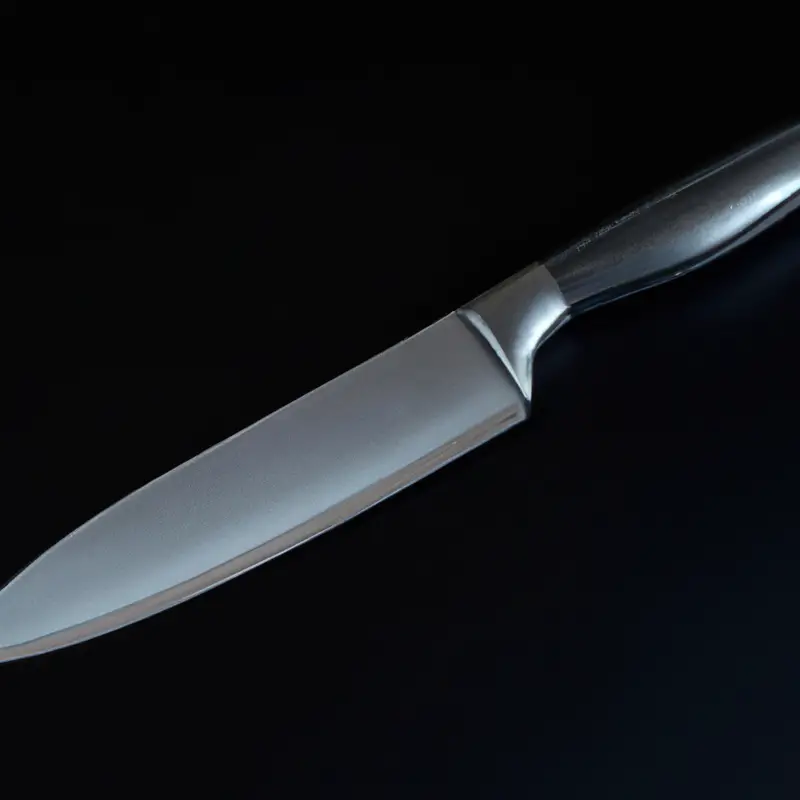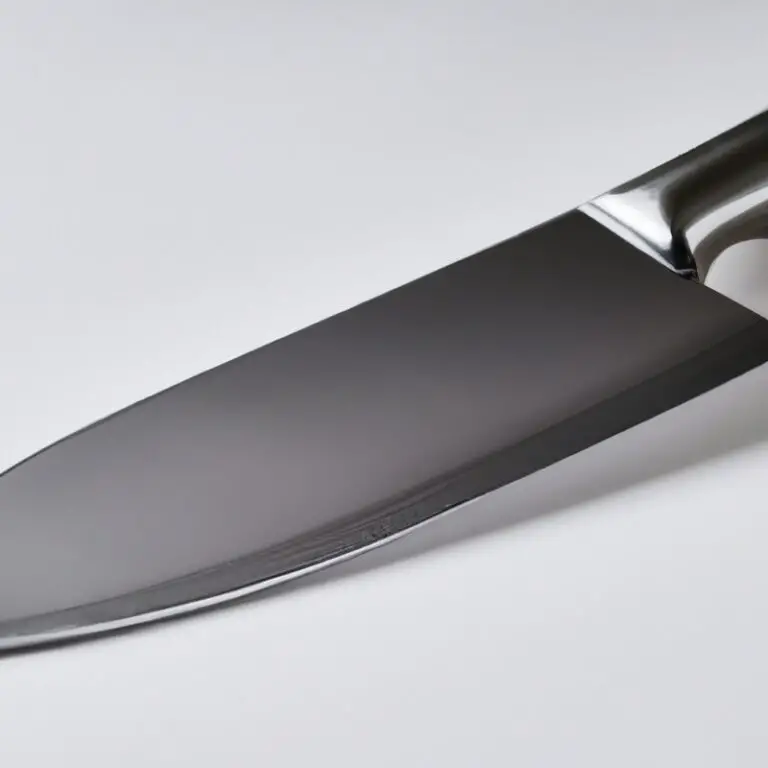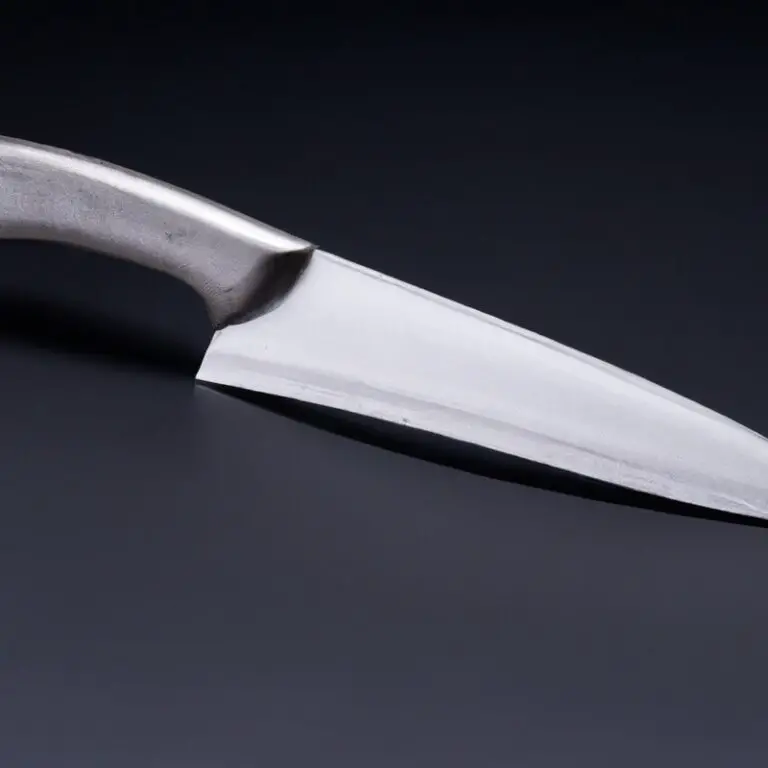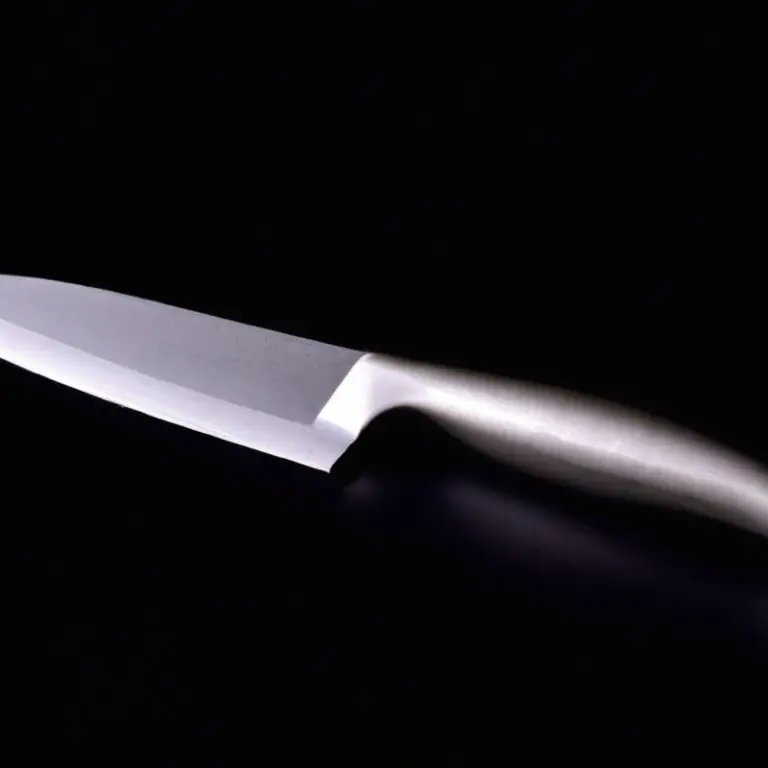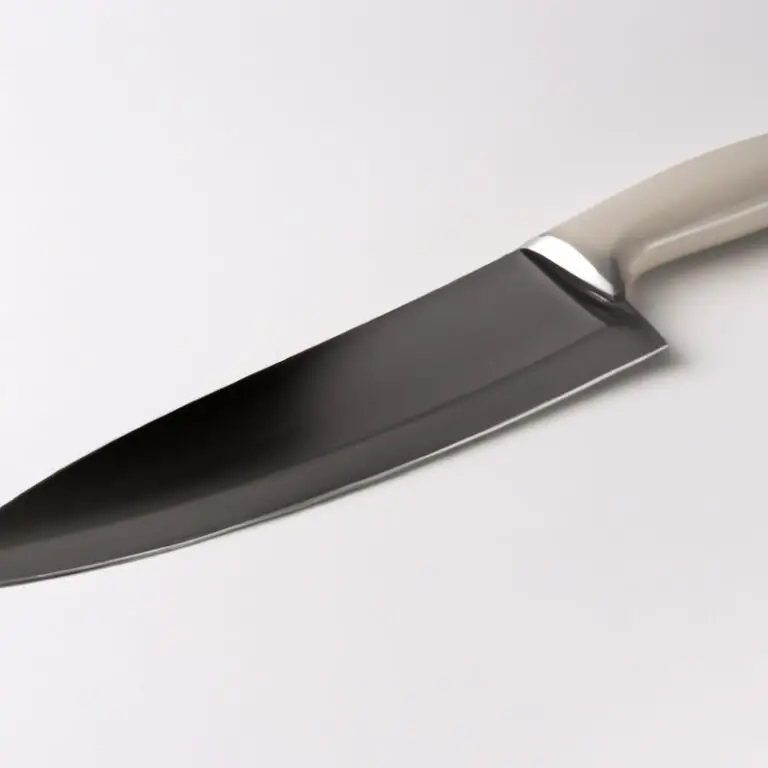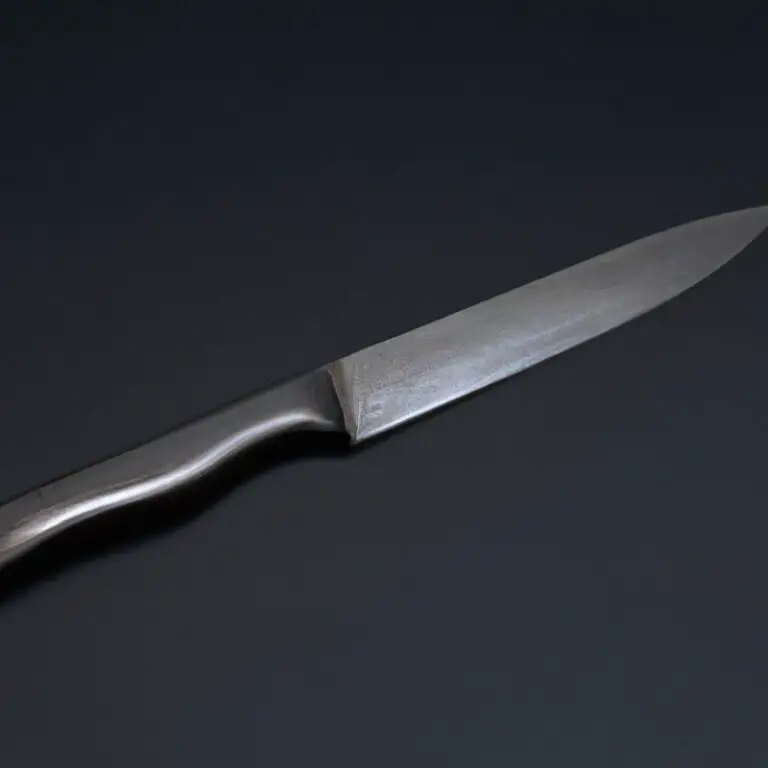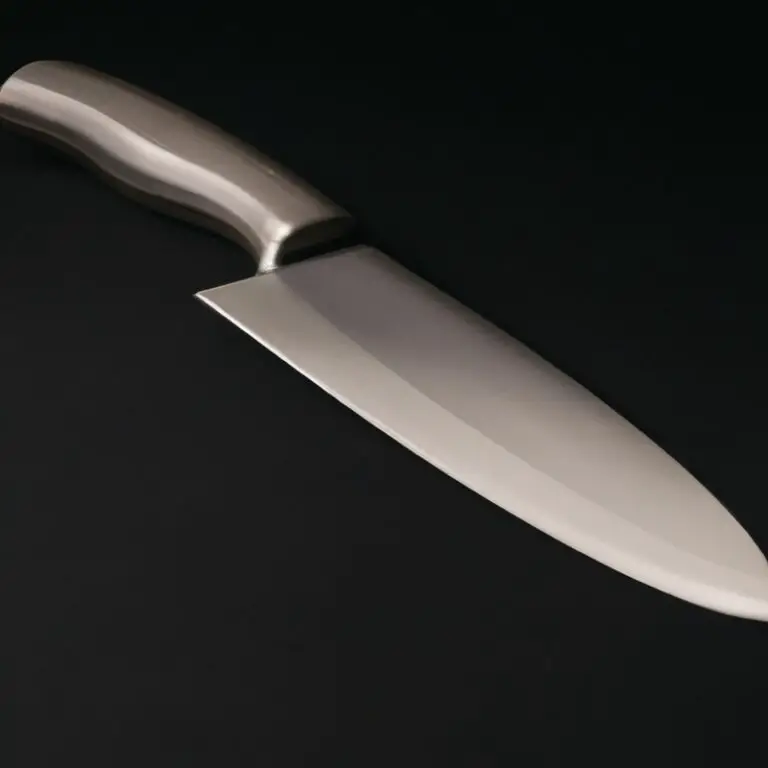Advantages Of a Sharpening Stone For Santoku Knives: Sharpness Guaranteed!
Key Takeaways:
- Sharpening stones enhance the performance of Santoku knives by restoring their sharpness and precision.
- Regular use of sharpening stones increases the longevity of Santoku knives and saves money in the long run.
- Professionals and home cooks alike benefit from using sharpening stones to improve the quality of their Santoku knife cuts.
- The convenience of sharpening stones allows for easy maintenance of Santoku knives, resulting in consistent and efficient cutting.
Are you tired of struggling with dull Santoku knives that can’t seem to slice through anything? Introducing the solution to your problem: a sharpening stone.
Not only does a sharpening stone enhance the performance and longevity of your beloved Santoku knife, but it also saves you money in the long run.
With different types of sharpening stones available in the market, it can be daunting to choose the right one. But worry not, we’ve got you covered.
In this article, we’ll explore the benefits of using a sharpening stone for your Santoku knife, how to choose the right type, and much more.
| Advantages of a Sharpening Stone for Santoku Knives |
|---|
| 1. Offers precise and customizable sharpening |
| 2. Maintains the original blade angle |
| 3. Removes dullness and extends the knife’s lifespan |
| 4. Enhances the knife’s performance and efficiency |
| 5. Economical and environmentally friendly |
Why use a sharpening stone for Santoku knives? Exploring the benefits
Using a sharpening stone for Santoku knives is beneficial for several reasons. Firstly, the process of sharpening with a stone helps to maintain the angle and shape of the blade.
This is essential for ensuring that the knife performs optimally and retains its sharpness for longer periods.
Secondly, sharpening with a stone gives you more control over the sharpening process and allows you to be more precise in honing the blade. This is particularly important for Santoku knives as they require a specific angle for optimal performance.
Thirdly, using a sharpening stone is a cost-effective option in the long run.
Instead of regularly replacing dull knives, sharpening with a stone can extend the life of the blade and save you money. Lastly, sharpening with a stone is a traditional method that has been used for centuries and is trusted by professional chefs and knife enthusiasts.
It is a time-tested technique that yields excellent results and ensures the longevity of your Santoku knife.
Overall, using a sharpening stone for Santoku knives is a worthwhile investment that guarantees peak performance, precision, and longevity.
Different types of sharpening stones for Santoku knives: Which one to choose?
There are three main types of sharpening stones for Santoku knives: oil stones, water stones, and diamond stones. Oil stones are made of natural materials and require oil to lubricate and prevent clogging.
Water stones are made of synthetic materials and require water to lubricate and prevent clogging.
Diamond stones are made of industrial-grade diamonds and are the most durable and long-lasting option. It’s essential to choose the appropriate grit for your sharpening stone.
Lower grit stones (around 200-400) are usually used for repairing damaged blades, while higher grit stones (1000 and above) are used for honing and polishing the blade’s edge.
When selecting a sharpening stone, consider the quality of the material and its durability. The stone’s size should be compatible with the size of your Santoku knife, and the stone’s thickness should be sufficient to enhance the sharpening process.
Overall, choosing the right sharpening stone depends on your preference, budget, and knife maintenance needs.
Consider trying different types and grits to find the one that works best for you and your Santoku knife.
How to choose the right grit for your Santoku knife sharpening stone
Choosing the right grit for your Santoku knife sharpening stone is crucial for achieving optimal results. Grit refers to the level of abrasiveness of the stone, and different grits are suitable for different stages of the sharpening process.
Here is a general guideline for choosing the right grit for your Santoku knife sharpening stone:
- Coarse (around 200-400 grit: Use a coarse grit stone if your knife has nicks, chips, or a dull edge. This grit will remove material quickly and reshape the blade.
- Medium (around 800-1000 grit: Use a medium grit stone for regular maintenance. This grit will refine the edge and remove any remaining nicks.
- Fine (around 3000-5000 grit: Use a fine grit stone for honing and polishing the edge. This grit will give your knife a razor-sharp edge and a mirror-like finish.
It’s important to note that the grit scale can vary somewhat depending on the manufacturer, but these general guidelines should provide a good starting point. Additionally, if you’re unsure about the condition of your knife or what grit to use, it’s always best to start with a lower grit and work your way up.
Choosing the right grit for your Santoku knife sharpening stone is just one part of the sharpening process.
Stay tuned for our step-by-step guide on how to sharpen your Santoku knife with a sharpening stone.
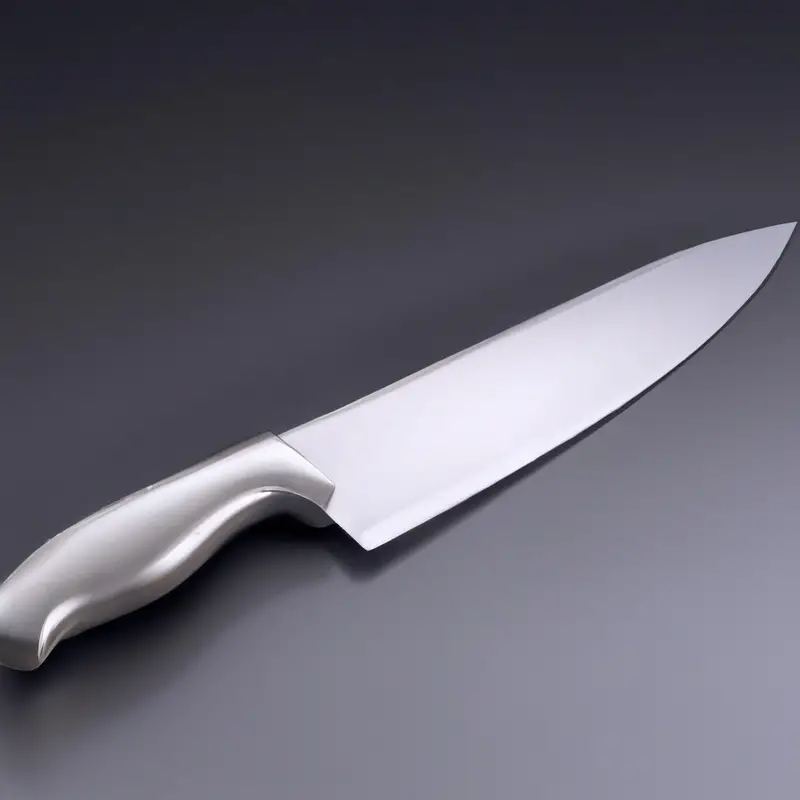
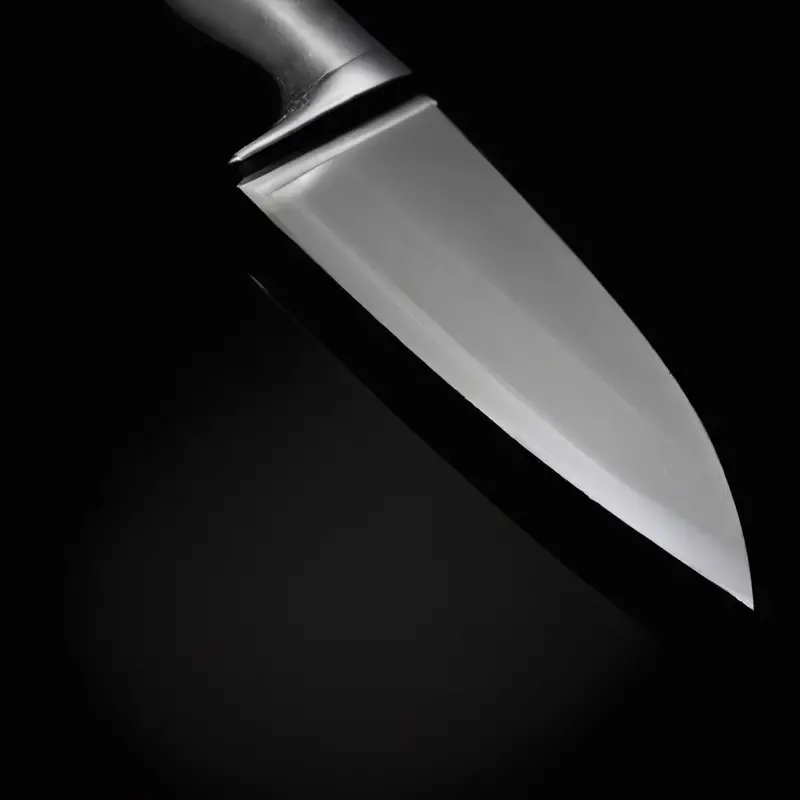
Step-by-step guide to sharpening your Santoku knife with a sharpening stone
Using a sharpening stone to sharpen your Santoku knife can be a little intimidating at first, but once you get the hang of it, it’s a simple process. Here is a step-by-step guide to sharpen your Santoku knife with a sharpening stone: Step 1: Choose the right grit sharpening stone.
Start with a coarse grit stone (around 1000 grit) and then move to a finer grit stone (around 4000 grit).
Step 2: Soak your sharpening stone in water for about 10-15 minutes before use. Step 3: Hold the sharpening stone securely on a flat surface.
You can use a damp towel to hold the stone in place if needed.
Step 4: Angle the blade of your Santoku knife at around 15-20 degrees to the sharpening stone. Then, using your dominant hand, place the heel of the blade at the base of the sharpening stone and slowly draw the knife towards you while applying light pressure.
Step 5: Repeat the process on the other side of the knife, using the same angle and light pressure.
Step 6: Once you have worked both sides of the blade on the coarse grit stone, move on to the finer grit stone and repeat the process. Step 7: Finish with some honing steel or a strop to refine the edge of your Santoku knife.
Step 8: Rinse off the blade and sharpening stone with water and dry thoroughly.
Remember, practice makes perfect, so don’t worry if it takes a few tries to perfect your sharpening technique.
Maintaining your Santoku knife’s edge: How often should you sharpen it?
Maintaining the edge of your Santoku knife is crucial to ensure it functions efficiently. Experts suggest sharpening the blade after every use or every six months if used occasionally.
However, the frequency of sharpening depends on its usage and the extent of wear and tear.
Regular honing with a honing steel or whetstone in between sharpenings can extend the life span of your knife’s sharpness. It is essential to avoid using a dull knife as it increases the risk of accidents, so ensure that your Santoku knife is sharpened regularly to maintain its effectiveness.
Can sharpening stones fix a damaged Santoku knife? Exploring the limitations
While sharpening stones can maintain and improve the edge of a Santoku knife, they have their limitations when it comes to fixing damages. If the knife has a chip in the blade or the edge is severely damaged, a sharpening stone may not be able to fully repair it.
In such cases, it is recommended that you take the knife to a professional to assess the damage and repair it if possible.
However, if the damage is minor, a sharpening stone can be used to smooth out the edge and bring back the sharpness. It is important to note that using a sharpening stone incorrectly can potentially cause further damage to the knife.
Therefore, it is crucial to follow proper sharpening techniques and to use the appropriate grit for the degree of damage.
The economics of using a sharpening stone for Santoku knives: Saving money in the long run
Using a sharpening stone for Santoku knives may seem like an additional expense, but in the long run, it can save you money. Sharpening your knife with a stone allows you to maintain the blade’s edge, thereby reducing the frequency with which you need to buy new knives.
Regularly honing a Santoku knife with a sharpening stone can extend its lifespan by up to 10 years, compared to only a few years with improper sharpening methods or not sharpening at all.
Purchasing a high-quality sharpening stone can also be a one-time investment that will last for years. Instead of frequently replacing cheap knives, investing in a sharpening stone can be a more cost-effective and sustainable option.
Moreover, keeping your Santoku knife sharp with a stone can help you avoid costly kitchen accidents.
Dull knives require more force to cut through food, which can result in slips, injuries, and ruined food. In contrast, properly sharpened knives reduce the need for excessive force, thus minimizing the risk of accidents.
Overall, the economics of using a sharpening stone for Santoku knives are undeniably favorable.
It may require an initial investment, but the benefits and savings in the long run make it a worthwhile purchase.
Sharpening stones vs other sharpening methods: Why the sharpening stone is the best
When it comes to sharpening Santoku knives, there are several methods to choose from, including electric sharpeners, whetstones, and honing rods. However, sharpening stones are undeniably the best option for achieving a razor-sharp edge.
Sharpening stones provide the most control and precision when sharpening.
They come in different grit levels, allowing you to start with a coarse stone and progressively move to finer grits for a polished edge. Sharpening stones also remove the least amount of metal from your blade, helping to prolong its lifespan.
In contrast, electric sharpeners and honing rods can be convenient, but they can also be aggressive and remove too much metal, shortening your blade’s lifespan.
These methods also don’t offer the same level of precision as sharpening stones, which can result in an uneven edge. Overall, investing in a high-quality sharpening stone can be a great investment for any Santoku knife owner, as it allows you to maintain and even improve the lifespan of your blade, while also providing the best possible level of control and precision during the sharpening process.
Tips and tricks for using a sharpening stone for Santoku knives: Getting the best results
To achieve optimal results when sharpening your Santoku knife with a sharpening stone, follow these tips and tricks:
- Soak your sharpening stone before use to ensure it’s properly lubricated.
- Angle your blade at 15 to 20 degrees relative to the stone, and maintain a consistent angle throughout the sharpening process.
- Begin with a coarse-grit stone and work your way up to a finer grit for a polished edge.
- Use light pressure when sharpening to avoid blade damage or excessive material removal.
- Use a honing rod after sharpening to refine the edge and maintain sharpness.
- Clean your sharpening stone after each use to prevent buildup and prolong its lifespan.
By following these tips, you’ll achieve a razor-sharp edge on your Santoku knife and prolong its lifespan.
Final Verdict
In summary, using a sharpening stone for Santoku knives provides numerous benefits that cannot be matched by other sharpening methods. Whether you are a professional chef or a home cook, a sharpening stone can help you maintain the sharpness of your Santoku knife and prolong its lifespan.
By choosing the right type of stone and grit, and following the proper sharpening techniques, you can produce a razor-sharp edge that will effortlessly slice through any ingredient.
Remember to regularly maintain your knife’s edge to avoid having to repair or replace it entirely. The simplicity and economic benefits of using a sharpening stone make it a practical choice for anyone looking to keep their Santoku knife at its peak performance.
By using a sharpening stone, you can truly master the art of Santoku knife sharpening and become a culinary expert in your own right.

